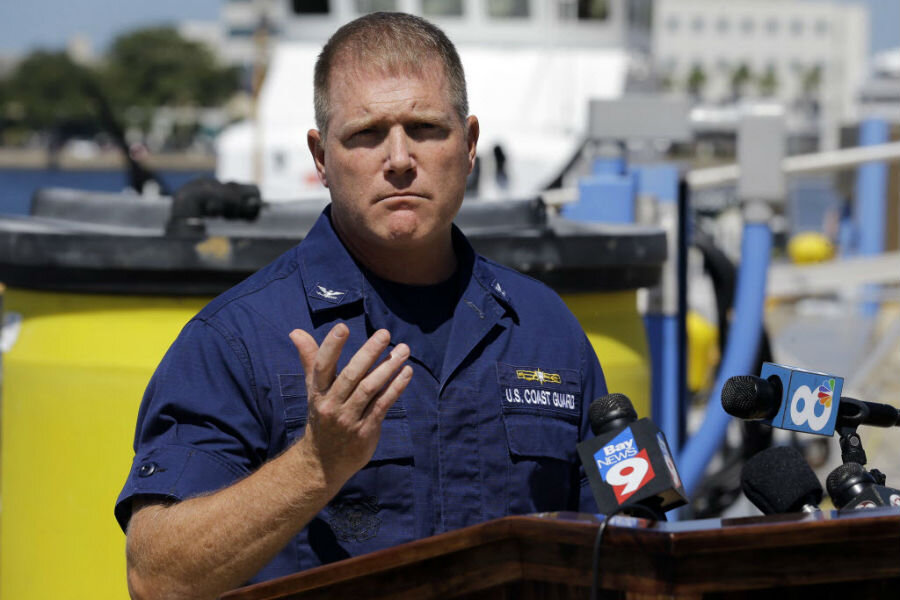How the Coast Guard searches for family lost off the Florida coast
Loading...
The US Coast Guard launched an air and sea search for a father and his three teenage children off the coast of Florida on Tuesday night.
The father, Ace Kimberly, and his children had been living on their 29-foot sailboat for about a year, according to media reports. They left Sunday at 7 a.m. to sail from Sarasota, Fla., to Fort Myers to get the boat repaired, and ran into trouble. Part way through their trip, off the coast of Englewood, the father called his brother and said the boat was caught in 6-foot waves and a rainstorm with squalls, and that the family was “attempting to survive,” the Guard said in a statement.
On Wednesday, the Coast Guard reported on Twitter that it had found debris – likely from the missing vessel – off the coast of Sanibel Island.
Later on Wednesday, the Coast Guard reported finding a yellow and a green kayak, also thought to belong to the family.
In the search for the father, his two sons, and daughter (Roger Kimberly, 13, Donny Kimberly, 15, and Rebecca Kimberly, 17), the Guard sent out an HC-130 Hercules, an MH-60 Jayhawk from Clearwater, and patrol boats from Cortez and Fort Myers, said the Guard.
The Fort Myers Beach USCG station activated the Maritime Emergency Response Team and USCG Air Station Miami is also helping with the search.
Before search and rescue teams are sent out, the USCG tries to narrow the search area. “The initial step,” Art Allen, an oceanographer with the Guard’s Search and Rescue office in Washington, D.C., told Scientific American, “is to talk with the reporting source and essentially gather as much information as possible.”
In 2009, a report from a friend of people lost at sea helped the Guard narrow its mission from a 16,000-square-mile area to 4,700 square miles, Scientific American reported.
The Guard uses its Search and Rescue Optimal Planning System to narrow the field further. Based on data about the size and mass of those lost, their previous known locations, and environmental elements – such as hazards, winds, and currents – the computer program can determine potential trajectories for the subjects.
Different objects have different drift and detection qualities, Mr. Allen said. To best estimate how an object will drift, the Guard plugs in data about similar objects whose behavior is already known.
“We can make 10,000 guesses for a given scenario A, and 10,000 guesses for a different scenario B,” Allen said. Then, the Guard uses real-time wind and current data to track a missing boat or sailor.
Finally, vessels and planes scour the sea.
“Even though we’re searching many, many square miles, the bare fact is that the ocean is very, very large, and you’re very small. It’s like looking for a soccer ball – the person’s head above water – in an area the size of the state of Connecticut,” Allen said.
On Tuesday night, the Guard completed eight search patterns without netting any results, Guard Captain Gregory Case said during a news conference on Wednesday. During the ninth search pattern, however, he said, a fixed-wing airplane found a debris field that included a tarp, water jugs, life vests, a pair of shoes, a basketball, and a propane tank about 38 miles off Sanibel Island, a few miles off of the Fort Myers coast.








